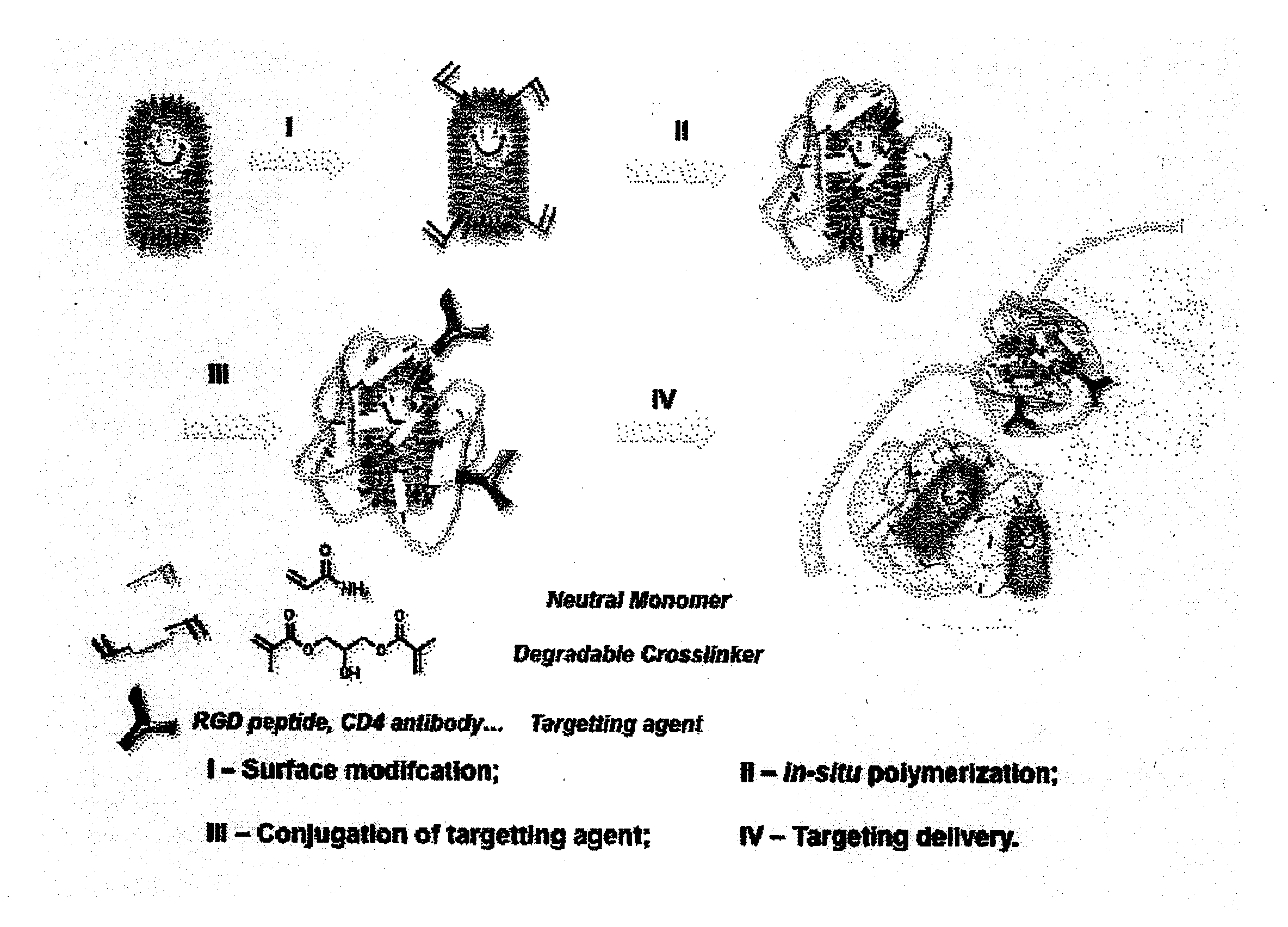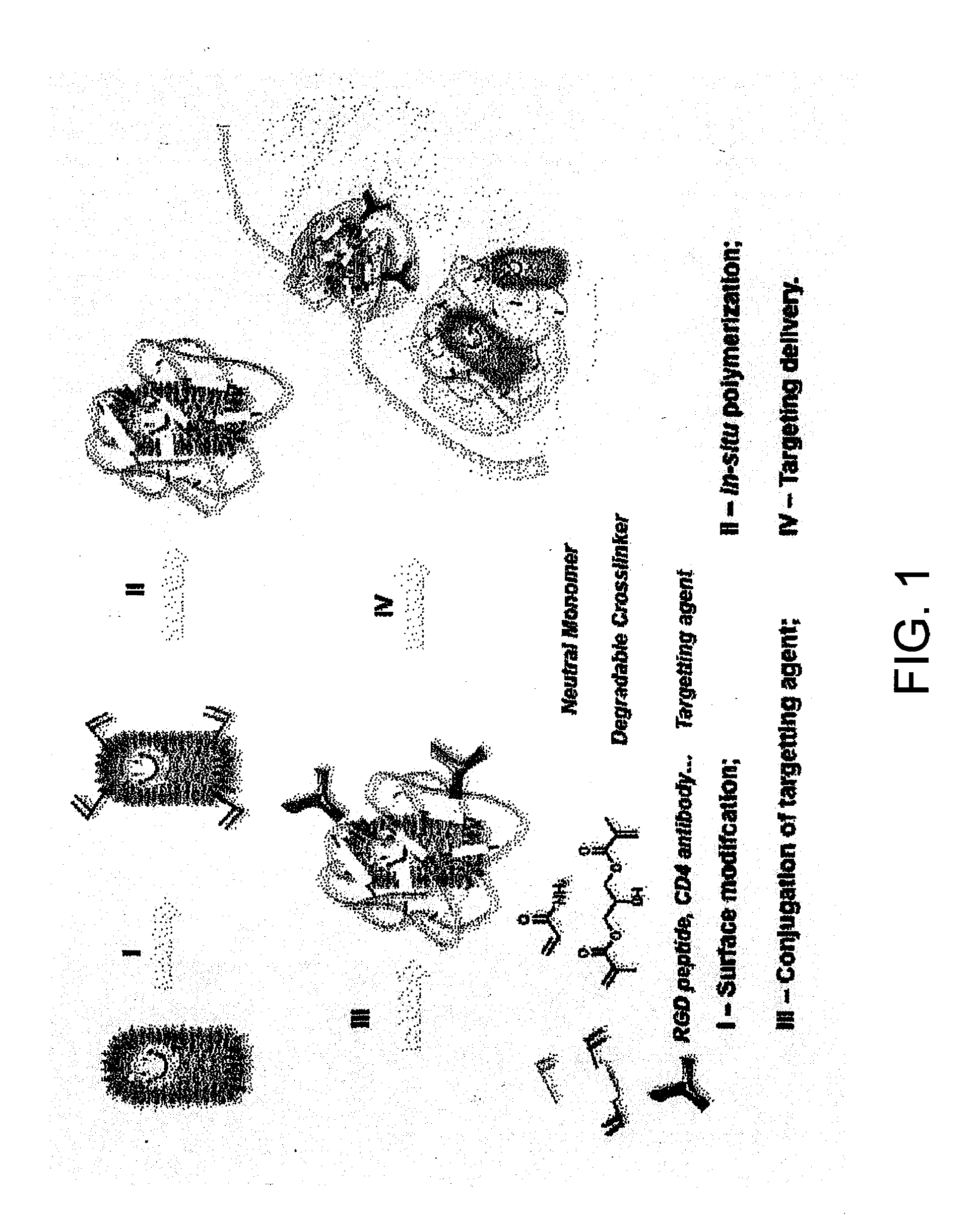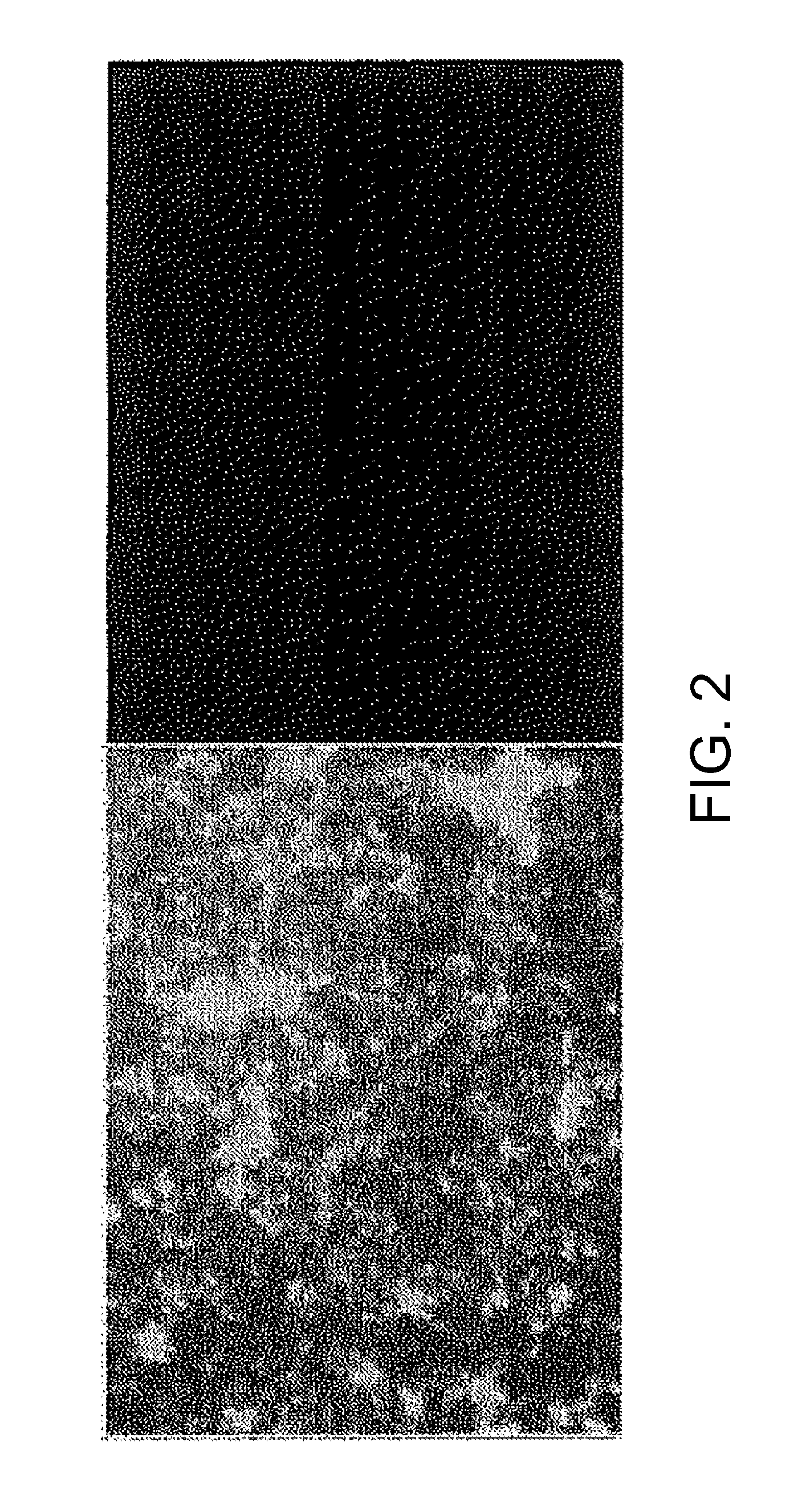Viral vector nanocapsule for targeting gene therapy and its preparation
- Summary
- Abstract
- Description
- Claims
- Application Information
AI Technical Summary
Benefits of technology
Problems solved by technology
Method used
Image
Examples
example 1
Viral Vector Nanocapsules for Targeting Gene Therapy and its Preparation
[0046]We use chemical modification and in-situ polymerization to fabricate crosslinked degradable polymer shell on the surface of single viral vector with designed thickness and properties. This polymer shell shields the native binding ability of the viral vectors. Targeting agents, such as antibodies, peptides, or growth factors, are covalently conjugated on the surface of the polymer and direct targeting of the polymer encapsulated viral vectors to specific cells including tumor cells, neurons, and human mobilized PBMCs (FIG. 1).
[0047]The transduction of Hela cells with RGD conjugated VSVg-HIV lentiviral nanocapsules is shown in FIG. 2. Transduction is indicated by the expression of EGFP in the cells. To test the effect of different thicknesses and densities of the polymer on viral transduction, the VSV-G pseudotyped lentiviral vectors were encapsulated with different concentrations of NAS and monomers. As sho...
example 2
Retargeting VSV-G Pseudotyped Lentiviral Vectors with Enhanced Stability by in Situ Synthesized Polymer Shell
[0049]The ability to introduce transgenes with precise specificity to the desired target cells or tissues is key to a more facile application of genetic therapy. Here, we describe a method using nanotechnology to generate lentiviral vectors with altered recognition of host cell receptor specificity. Briefly, the infectivity of the VSV-G pseudotyped lentiviral vectors was shielded by a thin polymer shell synthesized in situ onto the viral envelope and a new binding ability was conferred to the shielded virus by conjugating cyclic RGD (cRGD) peptide onto the polymer shell. We termed the resulting virus “targeting nanovirus”. The targeting nanovirus has similar titer with VSV-G pesudotypes and specifically transduced Hela cells with high transduction efficiency. In addition, the encapsulation of the VSV-G pseudotyped lentivirus by the polymer shell did not change the pathway th...
PUM
| Property | Measurement | Unit |
|---|---|---|
| Ratio | aaaaa | aaaaa |
| Affinity | aaaaa | aaaaa |
| Biodegradability | aaaaa | aaaaa |
Abstract
Description
Claims
Application Information
 Login to View More
Login to View More - R&D
- Intellectual Property
- Life Sciences
- Materials
- Tech Scout
- Unparalleled Data Quality
- Higher Quality Content
- 60% Fewer Hallucinations
Browse by: Latest US Patents, China's latest patents, Technical Efficacy Thesaurus, Application Domain, Technology Topic, Popular Technical Reports.
© 2025 PatSnap. All rights reserved.Legal|Privacy policy|Modern Slavery Act Transparency Statement|Sitemap|About US| Contact US: help@patsnap.com



